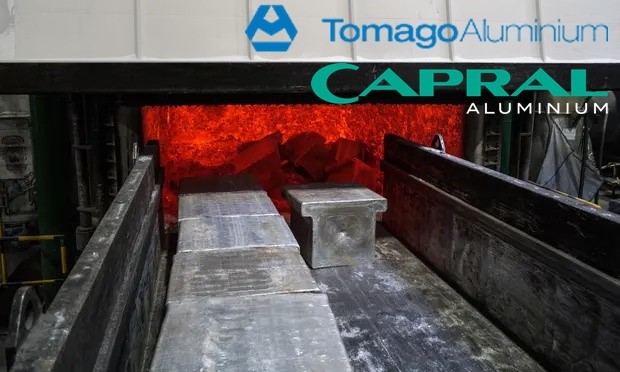

A contract has been signed between Capral Aluminium, Australia’s leading extrusion company, and Tomago Aluminium, Australia’s largest smelter, to supply approximately 550 tonnes of aluminium scrap annually for re-melting. This chain of conduct is the first of its kind, set in Australia and destined to carbon neutralise the country’s aluminium industries.

“As far as we are aware this is the first commercial scrap arrangement for post-production scrap aluminium to be re-melted in Australia and we are very excited to be working on this with the team at Tomago Aluminium,” said Capral General Manager Supply and Industrial Solutions, Luke Hawkins.
Re-melting aluminium is the secondary recycling of aluminium, totally opposite of the extraction process of alumina from bauxite. In aluminium recycling furnaces, aluminium is re-melted and forged into new products.
Australia has always been a safe haven for the storing of scrap until the declaration by the indigenous industries on the capacity of each smelter to safely store scrap material. More than 95% of Australia’s scrap from industries is exported for recycling.
The major importers of aluminium scrap are in South Korea and Indonesia. Other main markets include European countries and India. In 2020, Australian exporters reported 119,075 tonnes of aluminium being sent overseas, an increase of 25.13 per cent from the previous year.
“Australian customers are demanding access to more sustainable aluminium and we need to make changes as an industry to respond to this,” said Hawkins. For Capral that means working in close partnership with our suppliers to ensure we have access to Australian aluminium with recycled content.”
Capral is the country’s largest producer and distributor of aluminium products, running six manufacturing units throughout Australia. They primarily commit to aluminium extrusion jobs for use in diverse range of industrial, manufacturing and construction purposes.
Scrap produced from the manufacturing units of Capral’s Penrith extrusion plant would be transferred to Tomago Smelter to be melted and made into new aluminium products including billets.
“The scrap we provide will be scrap that is generated during the extrusion process, the aluminium billet used by our Penrith plant is supplied by Tomago which means they are able to ensure the alloy of the scrap is known which is critical for the remelt process,” said Hawkins.
“Generally, aluminium smelters have limited capacity for remelt. This is because of the safety and process risks of contamination. We’ve worked closely with Tomago to define this arrangement to ensure we provide scrap content which is of value to Tomago and able to be successfully and safely remelted.”
Aluminium smelters in Australia currently use up 14% of the power produced by the national grid since they rely on coal for the energy and for smelters like Tomago Aluminium, the production chain never stops operating. They are presently working on how to reduce the energy consumption and go clean on energy resource utilization. Tomago Aluminium uses around 10 per cent of the New South Wales power supply to produce 590,000 tonnes of aluminium per year.
Commenting on the new arrangements, Tomago Aluminium CEO Matt Howell said: “We are delighted to be able to close the loop for Capral and Tomago in a true ‘cradle to grave’ aluminium alloy supply and recycle arrangement. Best off all, the product that is made in NSW is now recycled in NSW. With global supply chains experiencing significant disruption and carbon footprint an increasing consideration, these new arrangements do not require international shipping through already congested ports.”
The energy used to recycle aluminium alloys at Tomago is a fraction of the amount required to produce primary aluminium from scratch. “Often the raw aluminium from our potlines must be cooled from ~950 degrees to ~720 degrees to be processed through the cast products department and having clean, dry extrusion scrap is a perfect way to do this.”
Aluminium is such a non-ferrous metal that can be recycled time and again, almost to infinity, passing it as a very sustainable material. Recycling of aluminium requires 95% less energy than the production of alumina from bauxite ore. In fact many environmental evils such as gaseous emissions, over use of natural gas or leaving of the harmful residue Red Mud can be avoided.
“This is a critical and important step for Capral and Tomago Aluminium; let’s call it the first significant step towards developing local circularity for Capral,” said Hawkins. “We are excited to embark on this journey with such a progressive and committed supplier and look forward to developing opportunities to build a local market for low carbon aluminium in Australia.”
For more than a decade now, Capral has partnered with Rio Tinto another Australian giant to deliver aluminium extrusions to the larger Australian market.



Responses






